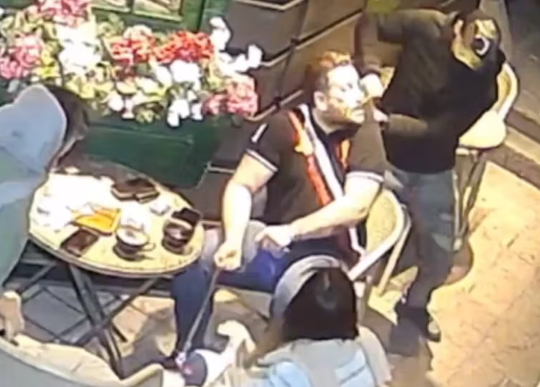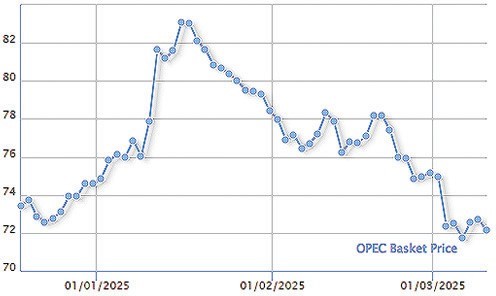The price is erratic and not on a constant downward slide. On Tuesday, for example, it rebounded with a dollar selling for around 17,000 rials.
But the trend is, without question, markedly downward. Early in December, the open market rate was about 12,000 rials to the dollar. So a price of 18,000 rials meant an immense loss of 50 percent in value. And there is no end in sight.
Long lines were seen at many banks as Iranians tried to buy the limited dollars they could at the official rate from the banks. Others were withdrawing their rial deposits from savings accounts and rushing to open market dealers to convert their rials into dollars before the rial sinks even further.
Zohreh Qobadi, a housewife, was one of those waiting in a long line at her bank. “I have some savings in my account,” she said. “I am trying to withdraw it and change all of it to dollars.”
Some currency traders shut their doors, some because they had no more dollars, others because the erratic market troubled them.
Trader Hamid Bakhshi told Reuters, “The rate is changing every second.… We are not taking in any rials to change to the dollar or any other foreign currency.”
There was speculation some traders went home because they calculated they could make a bigger profit if they just held onto their dollars for another week.
Their refusal to sell meant the supply was lower just as demand went up. So their absence from the market helped to drive the price of the rial down still further.
The official exchange rate, published each morning by the Central Bank has been sliding along with the open market rate, though not as severely.
The Central Bank has not folded to the free market. The Central Bank price of the dollar was 11,181 rials on Tuesday, a change of 296 rials or 2.7 percent from December 7, when the rial’s decline began.
The dollar passed 10,900 on December 8, 11,000 on December 15, 11,100 on December 24, and looks likely to pass 11,200 in days. Back in June, there was a another rial panic.
The Central Bank then folded to the open market and the official rate went to 11,726—the highest ever official rate on June 9. But the open market panic subsided within days and the rial returned to a more normal range.
The official rate went from 10,599 rials to the dollar on June 7, to 11,726 two days later to 10,593 one month later on July 7. The panic was all over in four weeks. It is possible the latest surge may be another panic that will subside soon and be history by February. Possibly.
Perhaps most troubling to those watching the economy has been the practice of some merchants to post prices in US dollars. That signals a complete loss of faith in the national currency.
A shift to dollar pricing is the norm in countries afflicted with hyper-inflation. Politically, the decline in the rial and the shift to dollars is also a blow to the Ahmadi-nejad Administration, which has often denigrated the dollar, calling it a failed currency that is being rejected by the world. Instead, the public is voting with its savings against the rial and the Ahmadi- nejad Administration.
Publicly, Ahmadi-nejad has pledged to do everything in his power to protect the rial. Supreme Leader Ali Khamenehi, on the other hand, has maintained total silence, which is his standard practice in times of economic disruption.
The dollar appears to be favored over the euro by far. The euro is under siege because of the crisis in Europe. The official rate of the euro has actually dropped marginally in Iran while the dollar has been escalating.
The euro sold for 14,608 rials December 7 just before the latest rial plunge began. On January 3, the euro sold for 14,512, two-thirds of 1 percent less than before the financial crisis in Iran.
Most of the public attributed the plunge this week to the signing into law of new US sanctions by President Obama on Saturday.
Foreign Ministry spokesman Ramin Mehman-Parast denigrated that interpretation. He said, correctly, that the law hasn’t taken effect yet and the new sanctions on Iran’s Central Bank are months away. But that was a naïve view and ignored the fact that people are acting on expectations for the future not on what happened in the past.
The public commonly blames past sanctions for many troubles in the Iranian economy and thus logically expects new sanctions to hurt Iran even more. Furthermore, the European Union is working on sanctions that may include a total cessation in purchases of Iranian crude oil.
But sanctions are not the sole cause. Economists in Tehran generally put the heaviest blame on the Ahmadi-nejad policy of insisting on low interest rates so the public can easily borrow money.
But that means low interest rates are also being paid on savings deposited in banks. Bank rates are 12 percent to 15 percent while inflation, according to the officially published figure, is just a hair under 20 percent.
That means depositors are losing money every day and this encourages them to put their money into gold, foreign currency or property.






















